
(3)
Tlaxcala's history dates back to Mexico's pre-Hispanic past when it was the home of the tribe known as the Tlaxcaltecas. Although the Tlaxcaltecas were closely related to the Aztecs, they were the Aztecs' bitterest enemies, and they were the only tribe in central Mexico never to have been conquered and made a part of the Aztec empire. When the Spanish "conquistador" Hernan Cortez arrived in Mexico he heard of the Tlaxcaltecas' rivalry with the Aztecs and made an alliance with the tribe.
Tlaxcalteca soldiers fought along side the Spanish against the Aztecs. Without their assistance Cortez might not have been successful in his conquest of Mexico.

A good place to start our tour is to climb the "escalinata" or staircase for a view of the city.
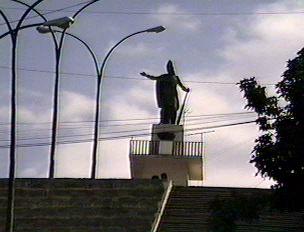
At the top of the staircase is a monument to Xicotencatl. Xicotencatl was the son of one of the Tlaxcalteca chieftains. He tried to warn his elders that they should not ally themselves with the Spaniards; that they themselves would lose their independence even if their Aztec enemies were defeated.
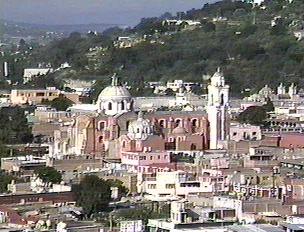
From the monument we look down at the center of the city.
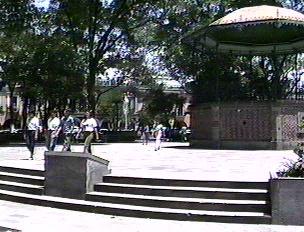
The Zocalo, or town square, with its trees, gardens, fountains and bandstand, is the delightful heart of the city.
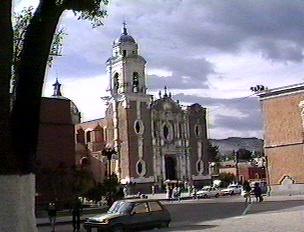
The parish church of San Jose, which stands at one corner of the Zocalo, is typical of the region's architecture. The tiles which decorate the facade and the domes are from the nearby city of Puebla.
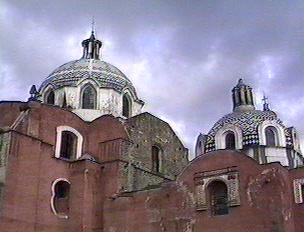
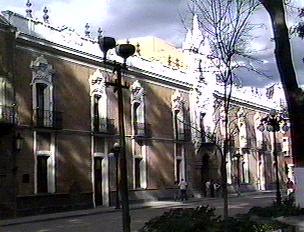
Also facing the Zocalo is the "Palacio de Gobierno", the headquarters for the government of the state of Tlaxcala.
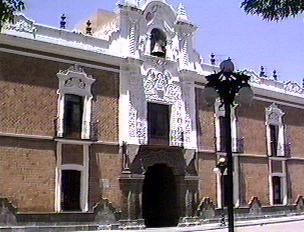
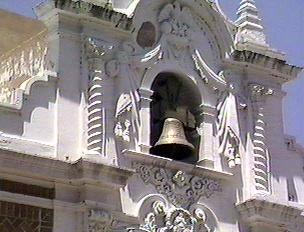
Over the entrance to the "Palacio de Gobierno" is a replica of Mexico's "liberty bell", the bell rung by Father Miguel Hidalgo to announce the beginning of Mexico's struggle for independence from Spain in 1810. Each year on September 15th, the eve of Mexico's Independence Day, the governor of Tlaxcala rings the bell and proclaims "¡Viva México! ¡Viva la independencia!"

Inside the courtyard of the Government Palace are a series of mural paintings by the Tlaxcalan artist, Xochiteotzin. The murals portray the mythology and history of the Tlaxcaltecas. Here we see the marketplace of pre-Hispanic Tlaxcala. The four men in the right foreground are the four chieftains who jointly governed the tribe.
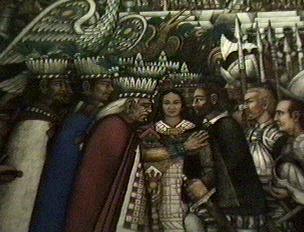
This portion of the murals portrays the alliance between the Tlaxcaltecas and the Spaniards. To the left are the chieftains, to the right Cortez and his officers. The woman in the center is doña Marina, the Indian interpreter and mistress of Cortez.
If you are planning on visiting Tlaxcala...
...here is my hotel recommendation.



